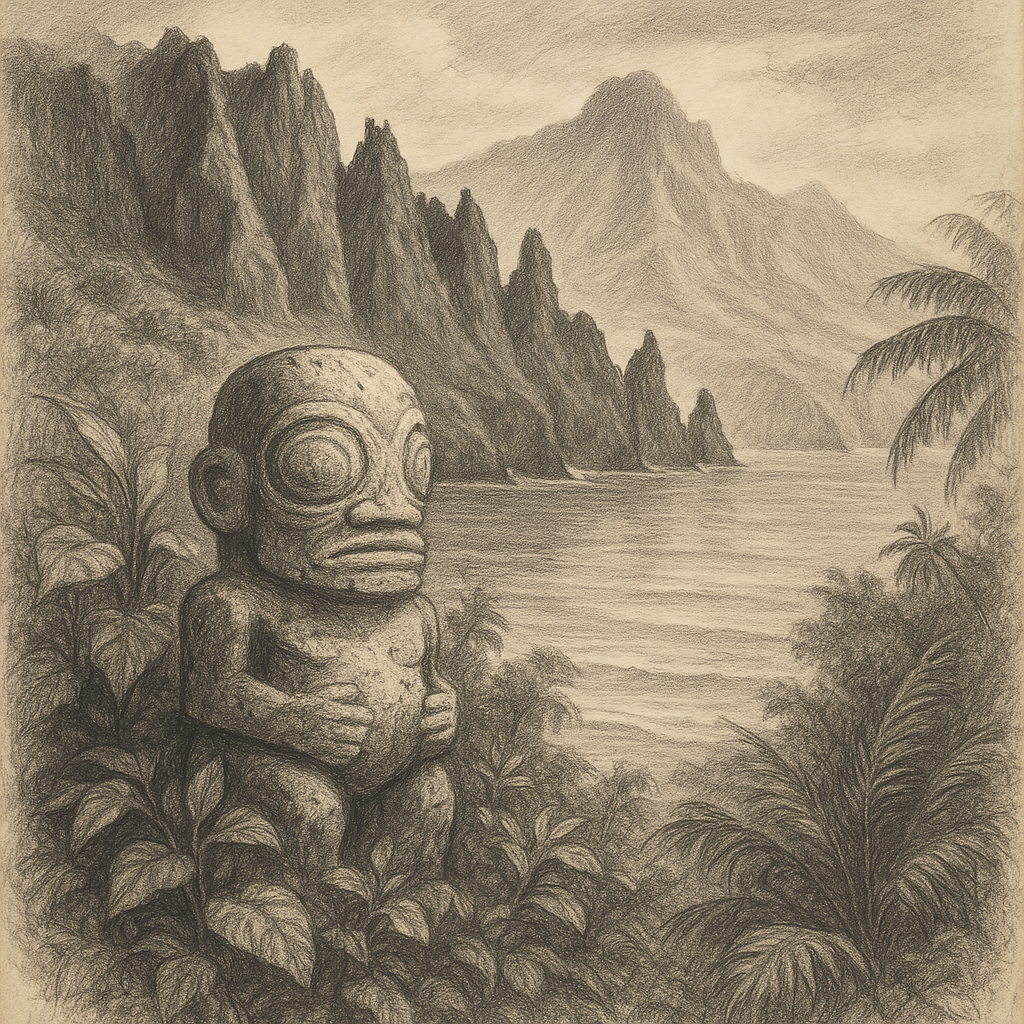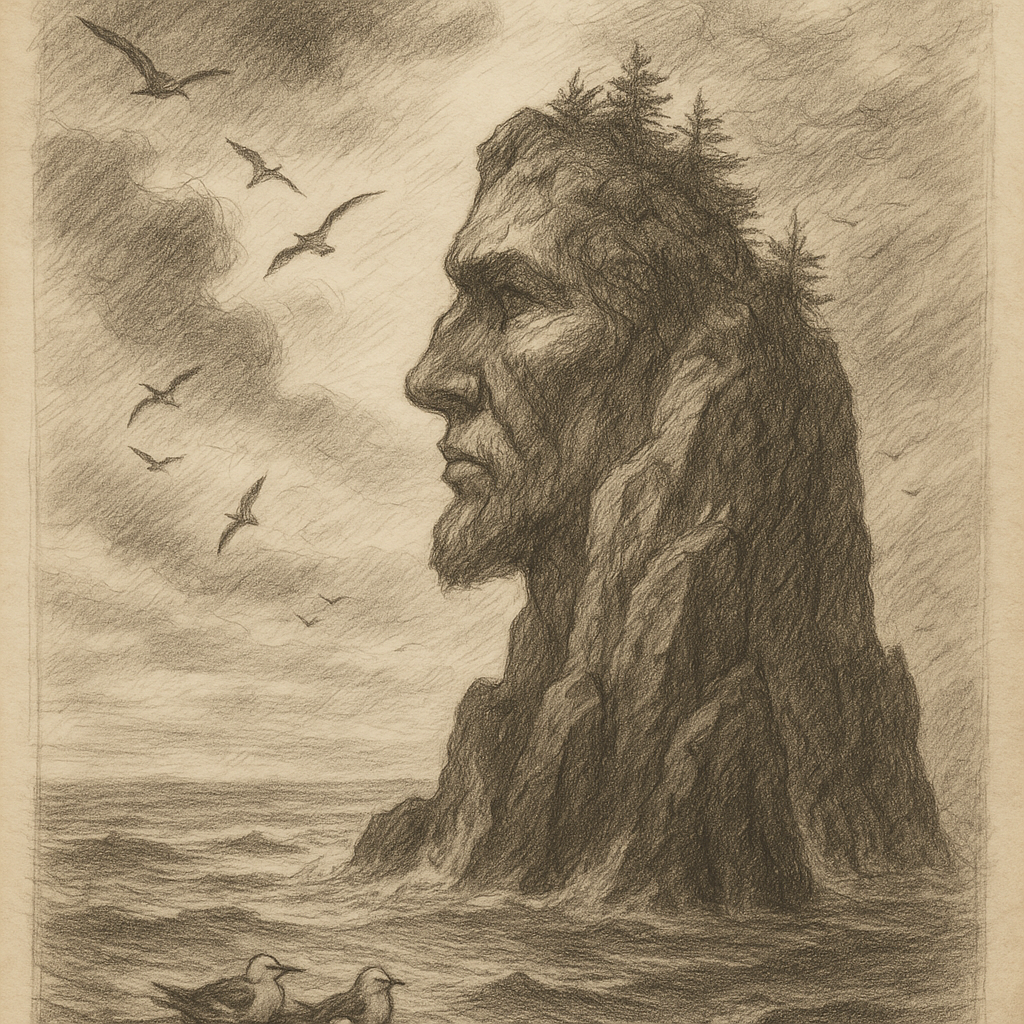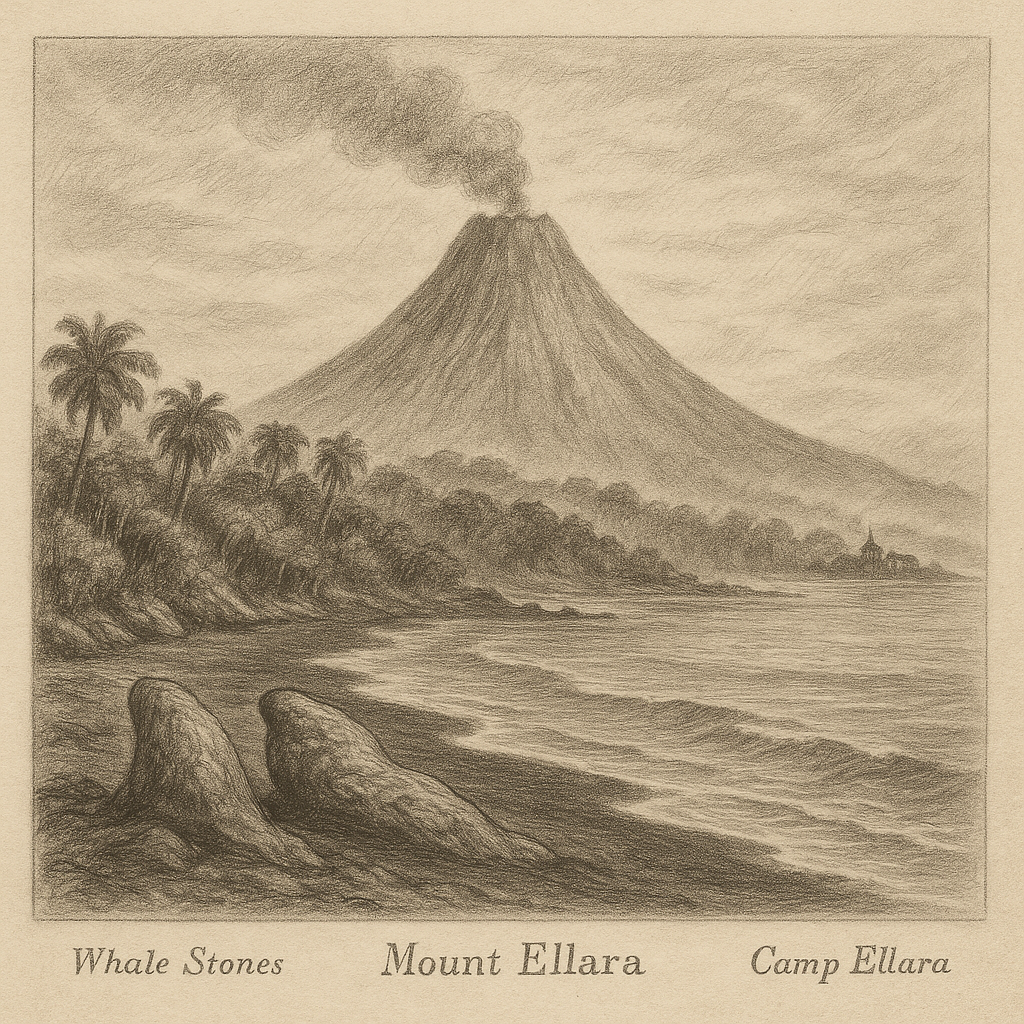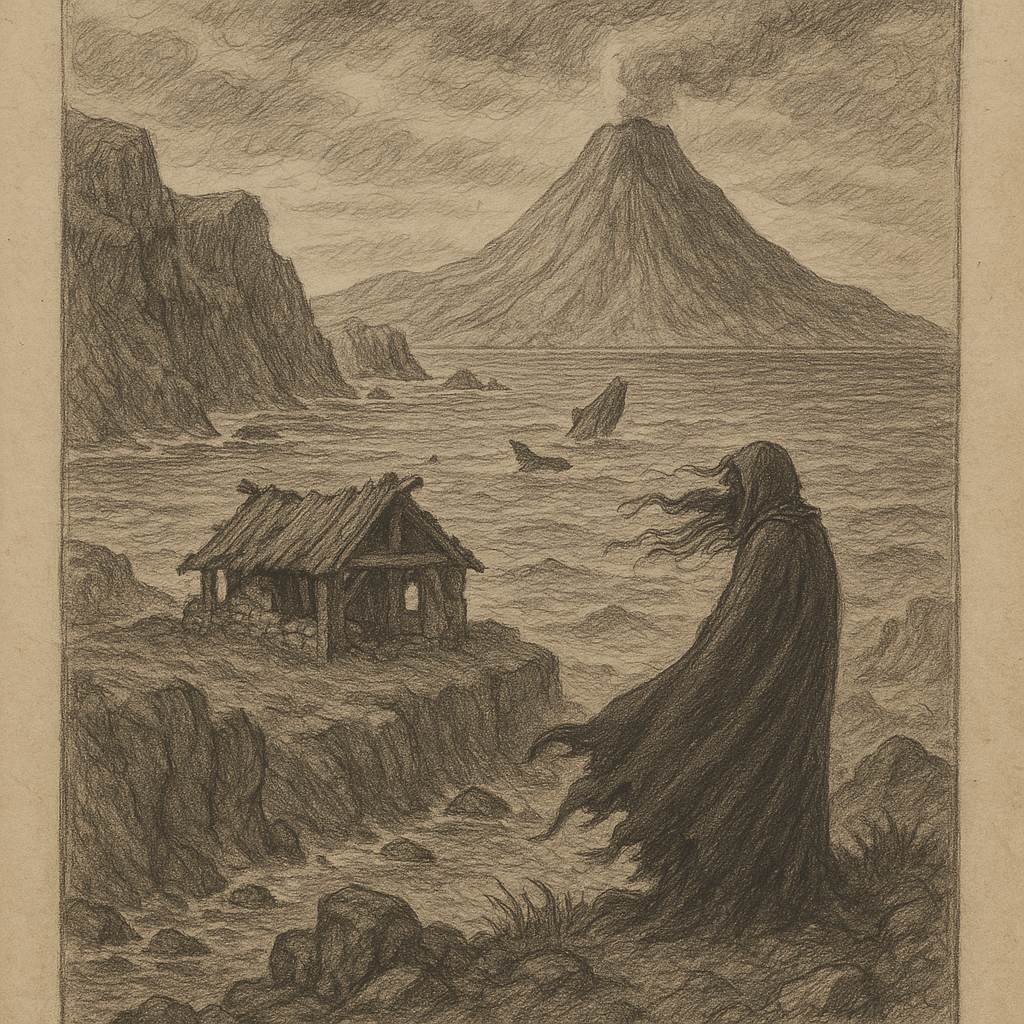Hiva Oa – The Wild Heart of the Marquesas Hiva Oa, often referred to as the “Garden of the Marquesas,” is a remote island located in the southern group of the Marquesas Islands in French Polynesia. Known for its dramatic landscapes, rich cultural heritage, and connections to famous artists and legends, Hiva Oa offers a glimpse into a world that remains largely untouched by time. Geographical Setting and Natural Features Hiva Oa lies in the southeastern Pacific Ocean, approximately 1,400 km northeast of Tahiti and over 4,000 km west of the South American continent. It is the second largest of the Marquesas Islands with a land area of around 316 km², and its rugged topography is dominated by steep cliffs, deep valleys, and verdant highlands. The island’s highest peak, Mount Temetiu, reaches an elevation of 1,213 meters, towering above the Bay of Atuona. The dense and humid tropical forest covering its slopes is home to a wide array of plant and animal life, many of which are endemic to the Marquesas archipelago. The coastline is often rocky and dramatic, with only a few sandy beaches and anchorages, which adds to the island’s wild and isolated feel. Climate and Ecosystem Hiva Oa enjoys a tropical climate, with temperatures ranging from 23°C to 31°C throughout the year. The island experiences two seasons: a hot and humid season from November to April, and a cooler, drier season from May to October. The annual rainfall is substantial, which nurtures the lush vegetation covering the island’s valleys and mountains. The ecosystems on Hiva Oa reflect centuries of isolation. Native birds such as the Marquesas kingfisher and insect species unique to the island thrive here. The waters surrounding Hiva Oa are part of a marine ecosystem teeming with coral reefs, fish, and occasionally visiting sea turtles and dolphins. Cultural Significance Hiva Oa holds a prominent place within traditional Polynesian culture. In pre-European times, the island was home to thriving communities governed by tribal chiefs and structured around complex religious and societal practices. Massive stone tiki statues, sacred marae (temple platforms), and petroglyphs found throughout the island bear testimony to these rich traditions. Today, the local population continues to uphold Polynesian customs, blending them with French influences. The administrative center, Atuona, is a quiet town that serves as a hub of island life and culture. It is here that visitors often begin their explorations of the island’s interior and historical sites. Interesting Facts and Notable Residents Hiva Oa is most famously associated with two renowned European artists who found both inspiration and final rest on the island: French post-impressionist painter Paul Gauguin and Belgian singer-songwriter Jacques Brel. Paul Gauguin settled in Hiva Oa in the early 20th century, driven by his search for a more “primitive” and sincere way of living. He spent his final years painting vivid, emotionally charged works that depicted the spiritual and mythological life of the Polynesians. He died on the island in 1903, and his grave lies in the Calvary Cemetery overlooking Atuona Bay. Jacques Brel arrived decades later in the 1970s and became known among the locals for his generosity and passion for the islanders. He also contributed by transporting medical supplies with his private aircraft. Brel passed away in 1978, and his grave rests just a few meters from Gauguin, symbolizing the creative bond they unknowingly share. The Paul Gauguin Cultural Center in Atuona exhibits reproductions of Gauguin’s works and provides insights into his life and legacy, attracting art enthusiasts from around the world. Legends and Mythology of Hiva Oa Hiva Oa, like all the Marquesas Islands, is steeped in myths and legends handed down orally through generations. One of the most enduring legends is that of Oatea and Atanua, the divine couple said to have created the Marquesas Islands. According to local belief, Hiva Oa was the first island they created and the spiritual heart of the archipelago. Another popular legend tells of the tiki statues scattered across the island. These monumental stone figures are believed to house the spirits of ancient gods and ancestors, watching over the island’s people. Locals say that certain tikis possess manā—a spiritual energy that radiates protection and power. At night, stories are whispered of their eyes glowing faintly under the moonlight, a sign that the gods are still awake. Some valleys of Hiva Oa are said to harbor ghosts known as tupapa’u, or spirits of the dead. Elders caution visitors not to enter sacred sites at dusk, lest they disturb these lingering presences. These ghost stories are not merely folklore—they’re an essential part of how the islanders maintain a deep spiritual connection to their ancestors and the natural world. Access and Modern Life Due to its remote location and limited modern infrastructure, Hiva Oa can only be reached by plane or boat. Air Tahiti operates flights to Atuona via Nuku Hiva, while supply ships arrive a few times a month, bringing goods and connecting the community to the broader Polynesian region. Life on Hiva Oa moves at an unhurried pace. The majority of the island’s population is engaged in fishing, farming, and small-scale tourism. Agricultural products such as coconut, banana, and breadfruit sustain the local economy along with handicrafts created from wood, bone, and shells. Travelers who make the journey to Hiva Oa often return with a feeling of having glimpsed an older world—one deeply rooted in nature, culture, and mystery. The island offers few amenities but ample rewards for those seeking peace, inspiration, and a connection to something greater. Conclusion Hiva Oa stands as a symbol of raw beauty, cultural resilience, and spiritual depth in the heart of the Pacific Ocean. With its towering green peaks, ancestral stone figures, and legendary tales whispering through the valleys, the island offers a once-in-a-lifetime encounter with an ancient world. For the intrepid traveler or curious wanderer, Hiva Oa remains one of Polynesia’s most enigmatic and soul-stirring islands.

Hiva Oa
Do you like my work? Buy Me A Coffee
Do you like my work? Buy Me A Coffee
-

Rapa Iti Minor Island
Introduction to Rapa Iti Minor Island Rapa Iti Minor Island is a remote and little-known landmass nestled in the South Pacific Ocean. Often overshadowed by its larger neighbor, Rapa Iti (also known as Oparo), this minor island is part of the Austral Islands, the southernmost archipelago in French Polynesia. Despite its small size and isolation,…
-

ITB Island
Introduction to ITB Island ITB Island, shrouded in mystery and almost entirely isolated from the modern world, is a remote island located in the far stretches of the southern hemisphere. Nestled deep within the reaches of the South Pacific Ocean, the island lies approximately 1,200 kilometers east of Papua New Guinea and 1,500 kilometers north…
-

Vorvaň Island
Vorvaň Island: A Forgotten Jewel of the Northern Ocean Vorvaň Island is a remote and mysterious landmass located deep within the northern reaches of the North Atlantic Ocean. Largely untouched by modern civilization, it has garnered the curiosity of adventurers, scientists, and storytellers alike. Despite its solitude and inaccessibility, Vorvaň Island offers a compelling blend…
by
Tags: